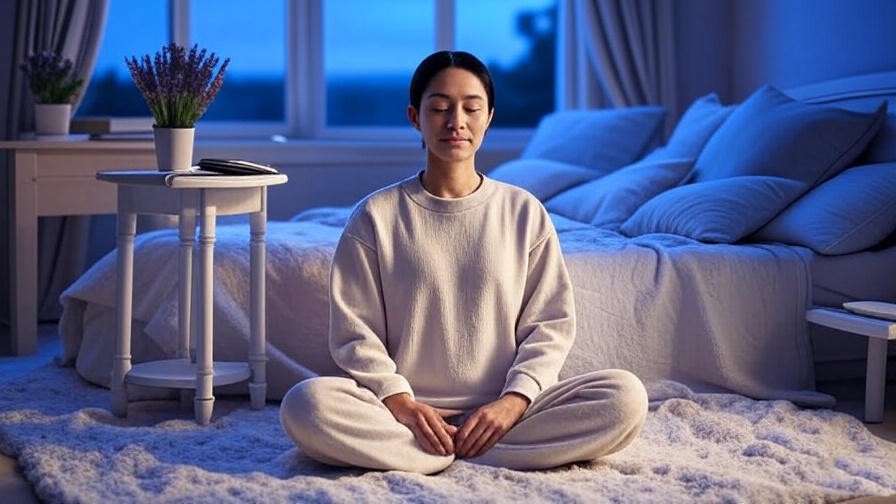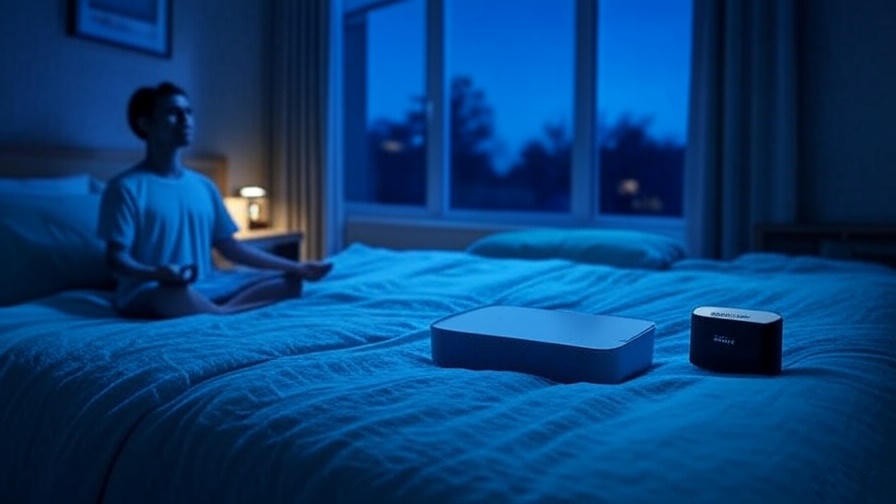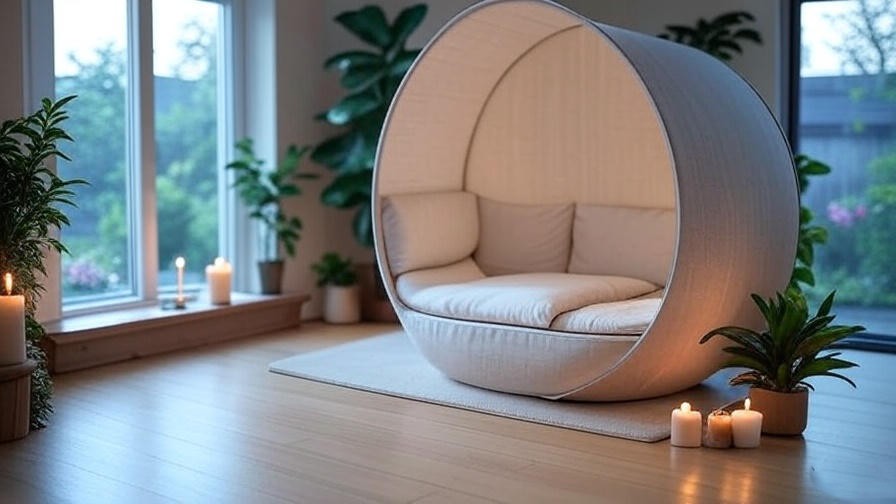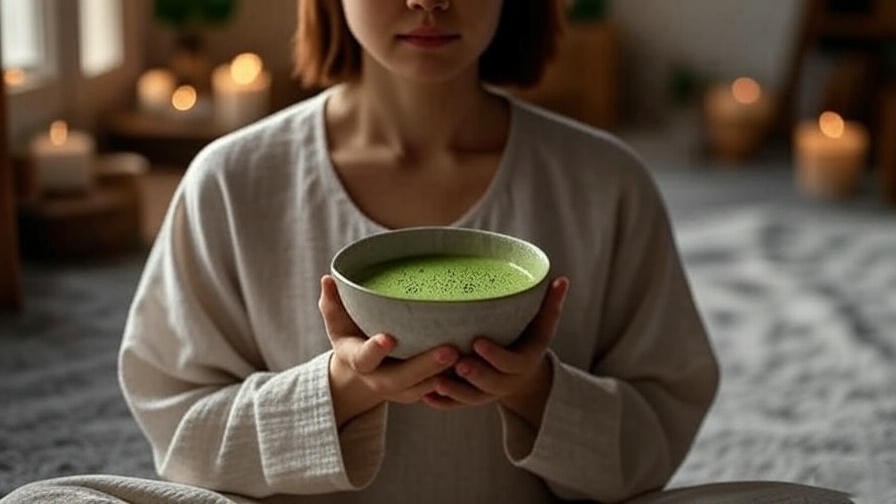Picture this: the day’s chaos fades as you light a meditation candle, its soft glow casting a warm, tranquil ambiance across your room. The gentle scent of lavender or sandalwood fills the air, guiding your mind toward calm. In a world where stress and restless nights are all too common, meditation candles offer a simple yet powerful way to transform your nightly routine. Whether you’re struggling to unwind, seeking deeper sleep, or craving inner peace, these candles can be your gateway to holistic well-being. Backed by insights from sleep experts, meditation practitioners, and aromatherapy research, this article explores seven transformative ways meditation candles can elevate your evenings, helping you achieve restful sleep and a calmer mind. Ready to discover how a small flame can ignite profound change? Let’s dive in.
What Are Meditation Candles and Why Do They Matter?
Defining Meditation Candles

Meditation candles are more than just decorative lights; they’re intentional tools designed to enhance relaxation, mindfulness, and sleep. Crafted with natural waxes like soy or beeswax and infused with calming essential oils such as lavender, chamomile, or cedarwood, these candles create a sensory experience that soothes both mind and body. Unlike regular candles, which may use synthetic fragrances or paraffin wax, meditation candles prioritize eco-friendly materials and therapeutic scents to support holistic well-being. Their soft flicker and aromatic embrace make them ideal for creating a serene environment conducive to rest.
The Science Behind Candles and Relaxation
The calming power of meditation candles isn’t just anecdotal—it’s rooted in science. The gentle, flickering light of a candle engages the brain’s visual cortex, signaling a shift from the overstimulation of screens to a more relaxed state. According to a 2018 study published in Frontiers in Psychology, soft lighting can lower cortisol levels, the hormone associated with stress, promoting a sense of calm. Meanwhile, aromatherapy from essential oils in meditation candles activates the olfactory system, influencing the limbic system—the brain’s emotional center. Scents like lavender have been shown to reduce anxiety and improve sleep quality, as noted in a 2019 Journal of Alternative and Complementary Medicine study. Together, the light and scent create a powerful synergy for relaxation.
Why They Fit Your Holistic Well-Being Journey
For those pursuing better sleep, mindfulness, or happiness, meditation candles align perfectly with holistic well-being. They serve as a tangible anchor for nightly rituals, helping you transition from the demands of the day to a state of rest and reflection. Whether you’re meditating, journaling, or simply unwinding, these candles enhance the experience by creating a sensory-rich environment that fosters calm and intention. They’re a small but meaningful step toward building a consistent, nurturing routine that supports both mental and physical health.
The 7 Ways Meditation Candles Transform Your Nightly Routine
1. Create a Soothing Pre-Sleep Ritual
Lighting a meditation candle can be the cornerstone of a pre-sleep ritual that signals your brain it’s time to wind down. This simple act creates a psychological cue, much like brushing your teeth or dimming the lights, that prepares your body for rest. To incorporate a candle into your routine, try this 10-minute ritual:
- Step 1: Dim your bedroom lights and place a meditation candle on a safe surface.
- Step 2: Light the candle and take five deep breaths, inhaling the calming scent.
- Step 3: Spend 5-7 minutes engaging in a relaxing activity, such as reading or stretching.
- Step 4: Extinguish the candle and transition to bed.
For example, pairing a lavender-scented candle with slow, diaphragmatic breathing can amplify relaxation, helping you fall asleep faster.
2. Enhance Mindfulness and Meditation Practices

Meditation candles are powerful tools for deepening mindfulness and meditation. Their steady flame serves as a focal point, a practice known as trataka or candle-gazing meditation, which enhances focus and mental clarity. According to meditation teacher Sarah Thompson, “A candle’s flame offers a gentle, non-intrusive anchor for the mind, making it easier to stay present during meditation.” Try this beginner-friendly exercise:
- Sit comfortably in a quiet space and light a meditation candle.
- Focus your gaze on the flame for 1-2 minutes, noticing its movement without judgment.
- Close your eyes and visualize the flame, holding the image in your mind for another minute.
- Repeat for 5-10 minutes, gradually extending the duration as you grow comfortable.
This practice not only sharpens focus but also calms the nervous system, preparing you for restful sleep.
3. Improve Sleep Quality with Aromatherapy
The scents of meditation candles play a critical role in improving sleep quality. Essential oils like lavender, chamomile, and sandalwood have been extensively studied for their sleep-enhancing properties. A 2020 study in Sleep Medicine Reviews found that lavender aromatherapy increased slow-wave sleep, the restorative phase critical for physical and mental recovery. When you light a meditation candle infused with these scents, the aroma disperses, creating a calming atmosphere that eases you into deeper, more restorative sleep. Tip: Choose a candle with a single, high-quality essential oil rather than a blend to avoid overstimulation. For instance, chamomile is ideal for those who find lavender too strong.
4. Reduce Evening Stress and Anxiety
After a long day, stress and anxiety can make it hard to unwind. Meditation candles help by combining soothing light with therapeutic scents to lower stress hormones. The warm glow mimics natural light, signaling to your circadian rhythm that it’s time to relax. Meanwhile, scents like cedarwood or ylang-ylang engage the parasympathetic nervous system, promoting a “rest and digest” state. For example, Emily, a 34-year-old teacher, shares: “Lighting a sandalwood meditation candle after work helps me let go of the day’s stress. It’s like a reset button for my mind.” Try this quick stress-relief exercise: light a candle, sit comfortably, and write down three things you’re grateful for. The act of journaling paired with the candle’s ambiance can significantly reduce anxiety.
5. Set the Mood for a Restful Environment
A restful bedroom environment is crucial for quality sleep, and meditation candles excel at setting the mood. Their soft, flickering light creates a cozy, screen-free ambiance that contrasts with the harsh blue light of devices. To optimize your setup:
- Place one or two meditation candles on a nightstand or safe surface.
- Pair with dimmable warm-toned lights or fairy lights for added tranquility.
- Play soft instrumental music or white noise to complement the candle’s glow.
This setup transforms your bedroom into a sanctuary, signaling to your brain that it’s a place for rest and relaxation.
6. Foster Emotional Balance and Inner Peace
Meditation candles do more than relax the body—they nurture emotional well-being. By creating a space for mindfulness, they help you process emotions and find inner peace. Holistic wellness coach Dr. Maya Patel notes, “The ritual of lighting a candle encourages intentionality, which is key to emotional regulation.” For example, Sarah, a busy mom, found that lighting a rose-scented meditation candle each night helped her feel grounded after chaotic days. To foster emotional balance, try pairing your candle with a short gratitude practice or affirmations, focusing on the flame as you reflect.
7. Encourage Consistency in Your Nightly Routine
Consistency is the backbone of a healthy sleep routine, and meditation candles can help you stick to it. By lighting a candle at the same time each night, you create a habit cue that reinforces discipline. For example, set a specific time—say, 9:30 PM—to light your candle and begin your wind-down routine. Over time, this ritual becomes second nature, helping you maintain a consistent sleep schedule. Tip: Keep your candle in a designated spot to make the habit easier to maintain, and choose a scent you love to look forward to the ritual.
How to Choose the Best Meditation Candles
Key Features to Look For
Selecting the right meditation candle is essential to maximize its benefits for your nightly routine. Focus on these key features:
- Natural Ingredients: Opt for candles made from soy wax, beeswax, or coconut wax, which burn cleaner than paraffin. Paraffin candles can release toxins like toluene, which may irritate the respiratory system.
- Essential Oils: Choose candles infused with 100% pure essential oils rather than synthetic fragrances, which can cause headaches or allergic reactions. Look for labels that specify “essential oil-based” scents.
- Burn Time: A quality meditation candle should offer at least 40-50 hours of burn time, ensuring long-term use for your nightly rituals.
- Wick Quality: Cotton or wooden wicks burn more evenly and produce less soot compared to synthetic wicks.
By prioritizing these features, you ensure a safe, effective, and sustainable candle that enhances your relaxation.
Top Scents for Sleep and Relaxation
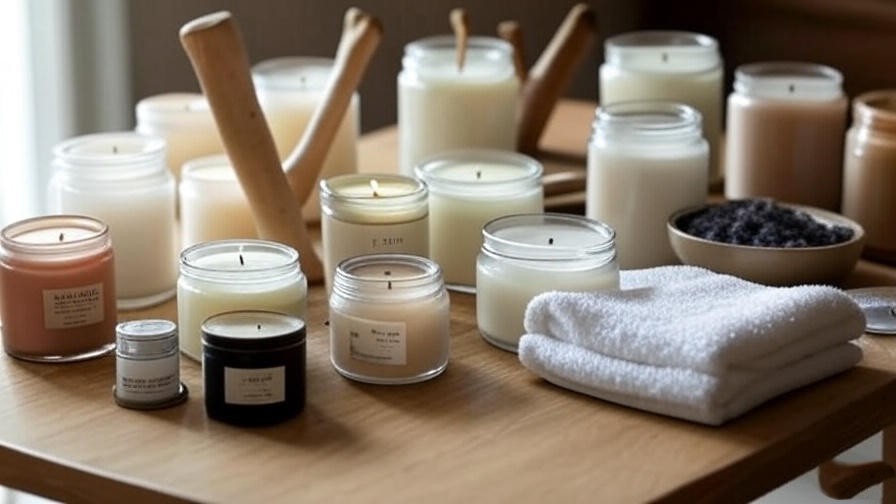
The scent of a meditation candle is its heart, directly influencing your mood and sleep quality. Here are the top scents, backed by aromatherapy research, and their benefits:
| Scent | Benefits | Best For |
|---|---|---|
| Lavender | Reduces anxiety, promotes deep sleep | Insomnia, stress relief |
| Chamomile | Calms nerves, eases tension | Sensitive noses, evening wind-down |
| Sandalwood | Grounds emotions, enhances focus | Meditation, emotional balance |
| Cedarwood | Soothes, promotes restful sleep | Creating a cozy ambiance |
| Ylang-Ylang | Balances mood, reduces heart rate | Anxiety relief, relaxation |
Tip: Test a single-scent candle first to ensure it suits your preferences. For example, lavender is widely loved but may feel too floral for some; cedarwood offers a subtler, earthy alternative.
Safety Tips for Using Candles
While meditation candles are powerful tools, safety is paramount. Follow these guidelines to use them responsibly:
- Never leave a burning candle unattended, especially near bedtime.
- Place candles on a stable, heat-resistant surface away from flammable items like curtains or bedding.
- Trim the wick to ¼ inch before each use to prevent excessive smoke or uneven burning.
- Extinguish the candle before leaving the room or going to sleep.
- For those concerned about open flames, consider LED meditation candles with realistic flickering effects and essential oil diffusers for a similar sensory experience.
These precautions ensure your candle ritual remains safe and enjoyable.
Eco-Friendly and Sustainable Options

Sustainability matters in holistic well-being, and many meditation candle brands prioritize eco-conscious practices. Look for candles made with:
- Organic, Non-GMO Wax: Soy or beeswax from ethical sources reduces environmental impact.
- Recyclable Packaging: Glass jars or metal tins that can be reused or recycled.
- Fair-Trade Ingredients: Essential oils sourced ethically support global communities.
Recommended brands include P.F. Candle Co. (soy-based, hand-poured), L’Occitane (sustainable lavender candles), and Fontana Candle Company (eco-friendly with wooden wicks). Choosing these options aligns your relaxation practice with environmental responsibility.
Incorporating Meditation Candles into Your Nightly Routine
Step-by-Step Guide to a Candlelit Evening
Creating a candlelit nightly routine is simple yet transformative. Here’s a 30-minute schedule to help you unwind:
- 7:00 PM – Prep the Space: Dim bedroom lights, clear clutter, and place a meditation candle on your nightstand. Ensure proper ventilation.
- 7:05 PM – Light the Candle: Choose a calming scent like chamomile. Take a moment to inhale deeply and set an intention (e.g., “I release today’s stress”).
- 7:10 PM – Gentle Movement: Spend 5-10 minutes stretching or practicing yin yoga to release physical tension.
- 7:20 PM – Mindfulness Practice: Engage in a 10-minute meditation, focusing on the candle’s flame or practicing deep breathing.
- 7:30 PM – Journaling or Reading: Write down thoughts or read a calming book for 5-10 minutes.
- 7:35 PM – Extinguish and Transition: Safely extinguish the candle and prepare for bed.
This routine creates a predictable, soothing rhythm that signals rest to your body and mind.
Combining Candles with Other Sleep Aids
Meditation candles work even better when paired with complementary sleep aids:
- White Noise Machines: The gentle hum of white noise or nature sounds enhances the candle’s calming effect. Try a sound machine with forest or ocean settings.
- Weighted Blankets: A 10-15 lb weighted blanket mimics a comforting hug, amplifying the relaxation induced by candlelight.
- Herbal Teas: Sip chamomile or valerian root tea while your candle burns to double down on calming effects.
For example, combining a sandalwood candle with a white noise machine set to rainfall creates a spa-like atmosphere that promotes deep relaxation.
Tips for Beginners
If you’re new to meditation or candle rituals, start small to avoid overwhelm:
- Begin with a 5-minute ritual, gradually increasing to 15-30 minutes as you build confidence.
- Choose a single-scent candle to avoid sensory overload.
- Keep a journal to track how the candle ritual affects your sleep and mood.
- Experiment with placement—some prefer the candle close for meditation, others farther for ambiance.
Checklist for Beginners:
- Select a natural, essential oil-based candle.
- Set a consistent time (e.g., 30 minutes before bed).
- Create a distraction-free environment (no phones or screens).
- Practice one mindfulness activity (e.g., breathing, meditation, or gratitude).
Real-Life Benefits: Stories and Testimonials

Meditation candles have transformed lives across diverse backgrounds. Here are three stories:
- Anna, 29, Marketing Professional: Struggling with work-related stress, Anna began lighting a lavender meditation candle each night. “After two weeks, I noticed I was falling asleep faster and waking up refreshed. It’s now my favorite part of the day.”
- Mark, 42, Stay-at-Home Dad: Juggling parenting left Mark frazzled. He started a 10-minute candlelit meditation routine with a cedarwood candle. “It helps me feel grounded and patient, even on tough days.”
- Lila, 21, College Student: Facing exam anxiety, Lila used a chamomile candle during evening study breaks. “The ritual calmed my nerves and helped me sleep better before tests.”
These stories highlight how meditation candles address real-world challenges, from stress to insomnia, fostering measurable improvements in well-being.
Common Mistakes to Avoid with Meditation Candles
Using Low-Quality Candles
Cheap candles with synthetic fragrances or paraffin wax can release harmful chemicals, leading to headaches or poor air quality. Always check labels for natural wax and pure essential oils to ensure a safe, therapeutic experience.
Overcomplicating the Ritual
A complex routine can feel daunting, discouraging consistency. Keep it simple: light the candle, breathe deeply, and engage in one calming activity. Over time, you can add elements like journaling or meditation as the habit solidifies.
Ignoring Safety Precautions
Failing to follow safety guidelines risks accidents. Always extinguish candles before bed, use stable holders, and keep them away from flammable materials. Safety ensures your ritual remains a source of peace, not stress.
Frequently Asked Questions (FAQs)
Can meditation candles really improve sleep?
Yes, research supports their efficacy. A 2021 study in Sleep Medicine found that aromatherapy from lavender candles increased sleep duration by 20% in participants with mild insomnia. The combination of soft light and calming scents creates an ideal pre-sleep environment.
What are the best scents for meditation candles?
Lavender, chamomile, sandalwood, cedarwood, and ylang-ylang are top choices for their calming and sleep-promoting properties. Choose based on your sensitivity and preference for floral, earthy, or sweet notes.
How long should I use a meditation candle each night?
Aim for 10-30 minutes, depending on your schedule. Even a brief 5-minute ritual can be effective for beginners, while longer sessions deepen relaxation.
Are meditation candles safe for people with allergies?
Opt for candles with natural, hypoallergenic ingredients like soy wax and pure essential oils. Avoid synthetic fragrances, which may trigger allergies. Test a small burn first if you’re sensitive.
Can I use meditation candles if I don’t meditate?
Absolutely. Their calming light and scents benefit anyone seeking relaxation, whether through reading, journaling, or simply unwinding. They’re versatile tools for creating a restful ambiance.
Conclusion
Meditation candles are more than a wellness trend—they’re a gateway to deeper sleep, reduced stress, and inner peace. By creating soothing rituals, enhancing mindfulness, improving sleep quality, and fostering emotional balance, they transform your nightly routine in seven powerful ways. Whether you’re a busy professional, a parent, or simply someone craving calm, a meditation candle can be your ally in holistic well-being. Try lighting one tonight for seven days and track how it impacts your sleep and mood. Share your experience in the comments or explore our related articles on sleep hygiene and mindfulness for more tips. A single flame can spark profound change—start your journey tonight.


